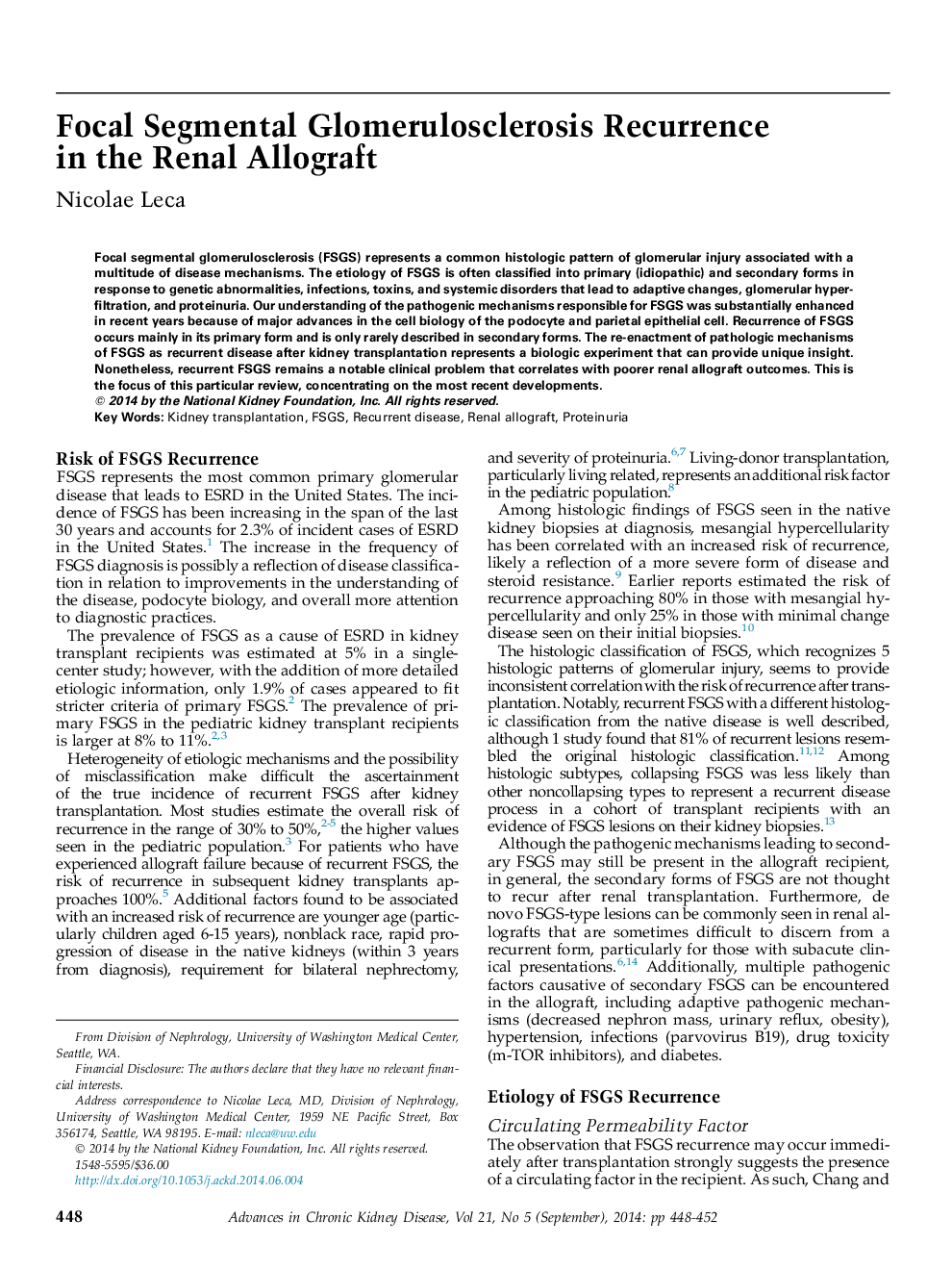| Article ID | Journal | Published Year | Pages | File Type |
|---|---|---|---|---|
| 3846632 | Advances in Chronic Kidney Disease | 2014 | 5 Pages |
Abstract
Focal segmental glomerulosclerosis (FSGS) represents a common histologic pattern of glomerular injury associated with a multitude of disease mechanisms. The etiology of FSGS is often classified into primary (idiopathic) and secondary forms in response to genetic abnormalities, infections, toxins, and systemic disorders that lead to adaptive changes, glomerular hyperfiltration, and proteinuria. Our understanding of the pathogenic mechanisms responsible for FSGS was substantially enhanced in recent years because of major advances in the cell biology of the podocyte and parietal epithelial cell. Recurrence of FSGS occurs mainly in its primary form and is only rarely described in secondary forms. The re-enactment of pathologic mechanisms of FSGS as recurrent disease after kidney transplantation represents a biologic experiment that can provide unique insight. Nonetheless, recurrent FSGS remains a notable clinical problem that correlates with poorer renal allograft outcomes. This is the focus of this particular review, concentrating on the most recent developments.
Related Topics
Health Sciences
Medicine and Dentistry
Nephrology
Authors
Nicolae Leca,
